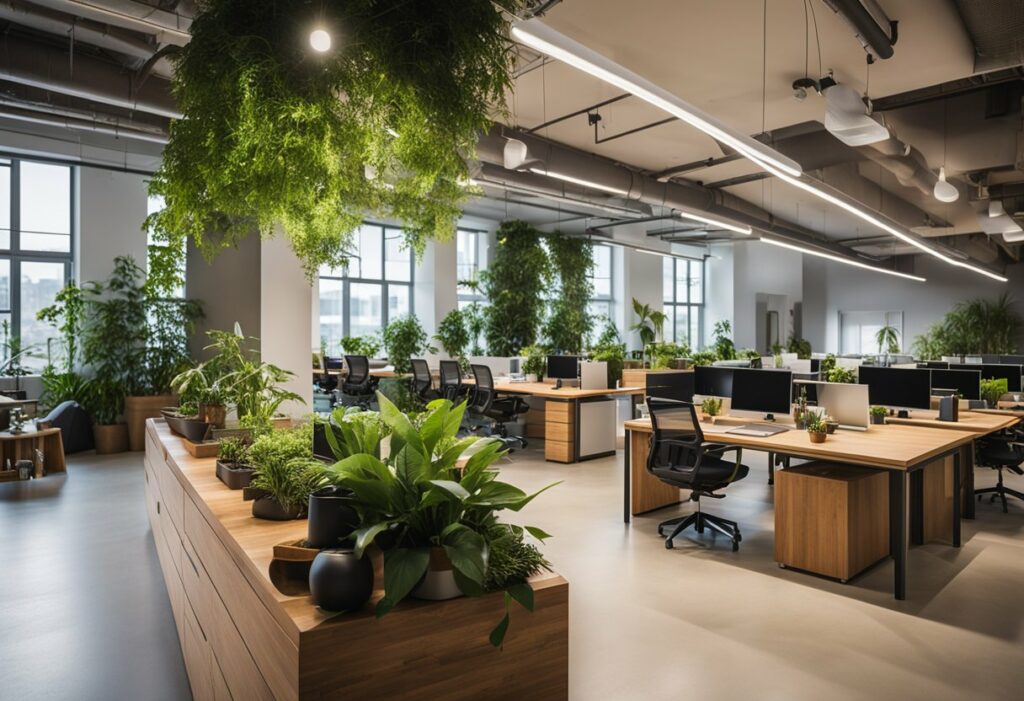Eco-Friendly Office Design: Creating Sustainable Workspaces for a Greener Future
Are you looking for ways to make your office more eco-friendly? Eco-friendly office design is becoming increasingly popular as companies realise the importance of sustainability and reducing their environmental impact. By adopting sustainable strategies, you can create a healthier and more productive workspace for your employees while also doing your part to protect the planet.
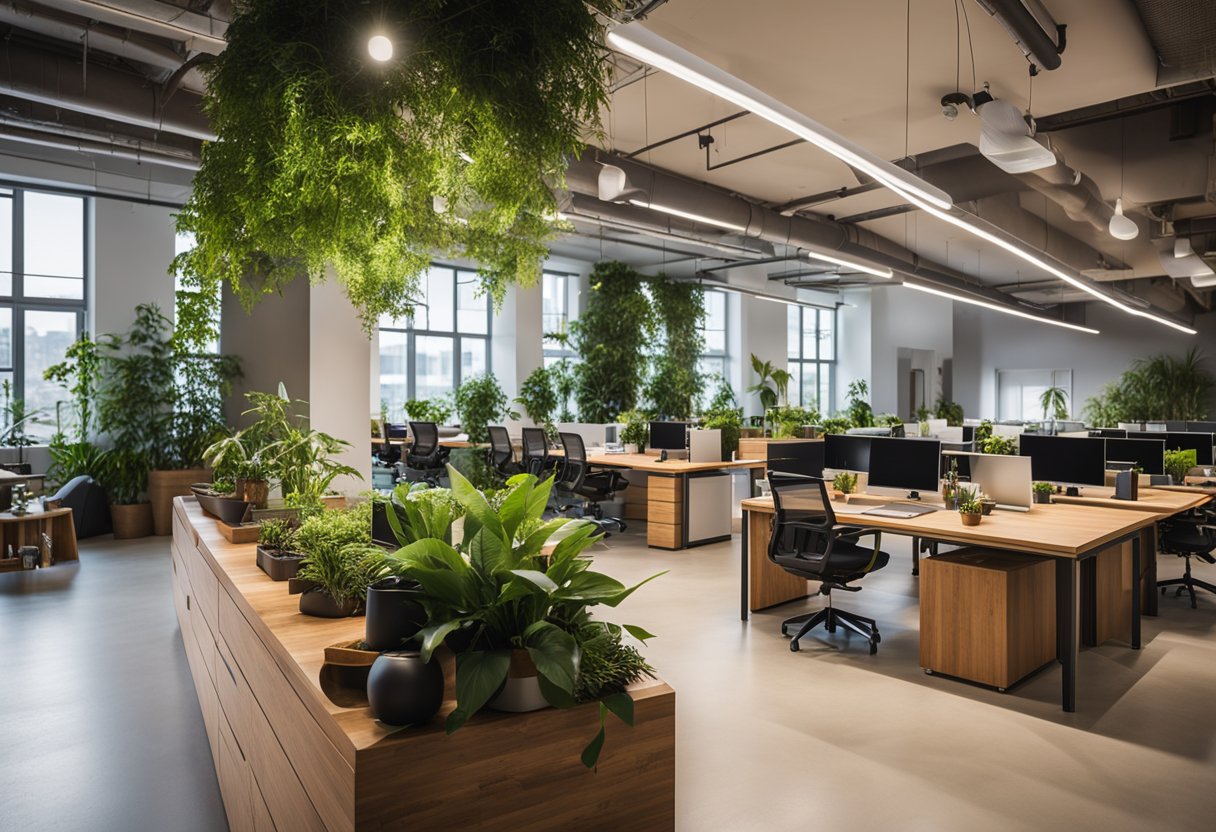
Fundamentals of Eco-Friendly Office Design include using energy-efficient lighting, installing low-flow faucets and toilets, and investing in sustainable materials. You can also incorporate green spaces and natural light to create a more comfortable and inviting atmosphere. When choosing furniture and decor, look for products made from recycled or sustainable materials, such as bamboo or reclaimed wood.
Employee-Centric Sustainable Strategies include encouraging employees to use public transportation or carpool, providing reusable dishes and utensils in the break room, and implementing recycling programs. By involving your employees in your sustainability efforts, you can create a culture of environmental awareness and responsibility.
Key Takeaways
- Eco-friendly office design can create a healthier and more productive workspace while also reducing your environmental impact.
- Fundamentals of eco-friendly office design include using energy-efficient lighting, installing low-flow faucets and toilets, and investing in sustainable materials.
- Employee-centric sustainable strategies include encouraging employees to use public transportation or carpool, providing reusable dishes and utensils in the break room, and implementing recycling programs.
Fundamentals of Eco-Friendly Office Design
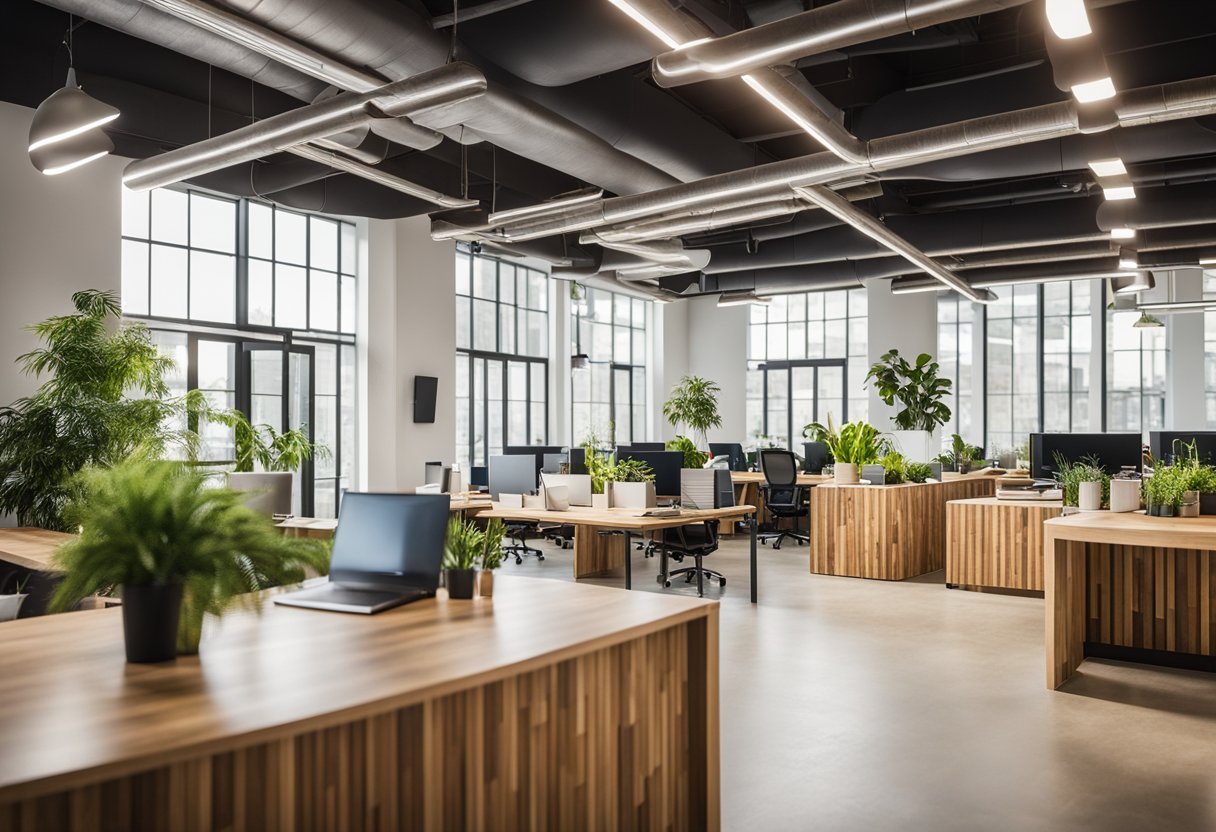
Designing an eco-friendly office can seem daunting, but it’s easier than you think. Incorporating natural elements, selecting sustainable materials, and using energy-efficient appliances are just a few ways to create an eco-friendly workspace. In this section, we will go over the fundamentals of eco-friendly office design and how to make your office more sustainable.
Incorporating Natural Elements
One of the simplest ways to make your office more eco-friendly is by incorporating natural elements. Natural light, for example, can improve productivity and reduce energy usage. Consider positioning your workstations near windows to take advantage of natural light. Additionally, adding plants to your workspace can improve air quality and reduce stress. Biophilic design, which incorporates natural elements into the office, has been shown to increase productivity and employee satisfaction.
Selecting Sustainable Materials
Selecting sustainable materials is another important aspect of eco-friendly office design. Bamboo, for example, is a sustainable material that can be used for flooring, furniture, and even office supplies. It grows quickly and doesn’t require pesticides or fertilizers. When selecting furniture, look for pieces made from recycled materials or FSC-certified wood. FSC certification ensures that the wood used in the furniture comes from responsibly managed forests.
Energy Efficiency and Renewable Energy Sources
Energy efficiency is crucial when it comes to creating an eco-friendly office. Use energy-efficient appliances, such as LED light bulbs and Energy Star-rated appliances, to reduce energy usage. Consider installing solar panels to generate renewable energy for your office. Not only will this reduce your carbon footprint, but it can also save you money on energy bills in the long run.
In summary, incorporating natural elements, selecting sustainable materials, and using energy-efficient appliances are just a few ways to create an eco-friendly office. By taking these steps, you can reduce your carbon footprint and create a healthier workspace for you and your employees.
Employee-Centric Sustainable Strategies
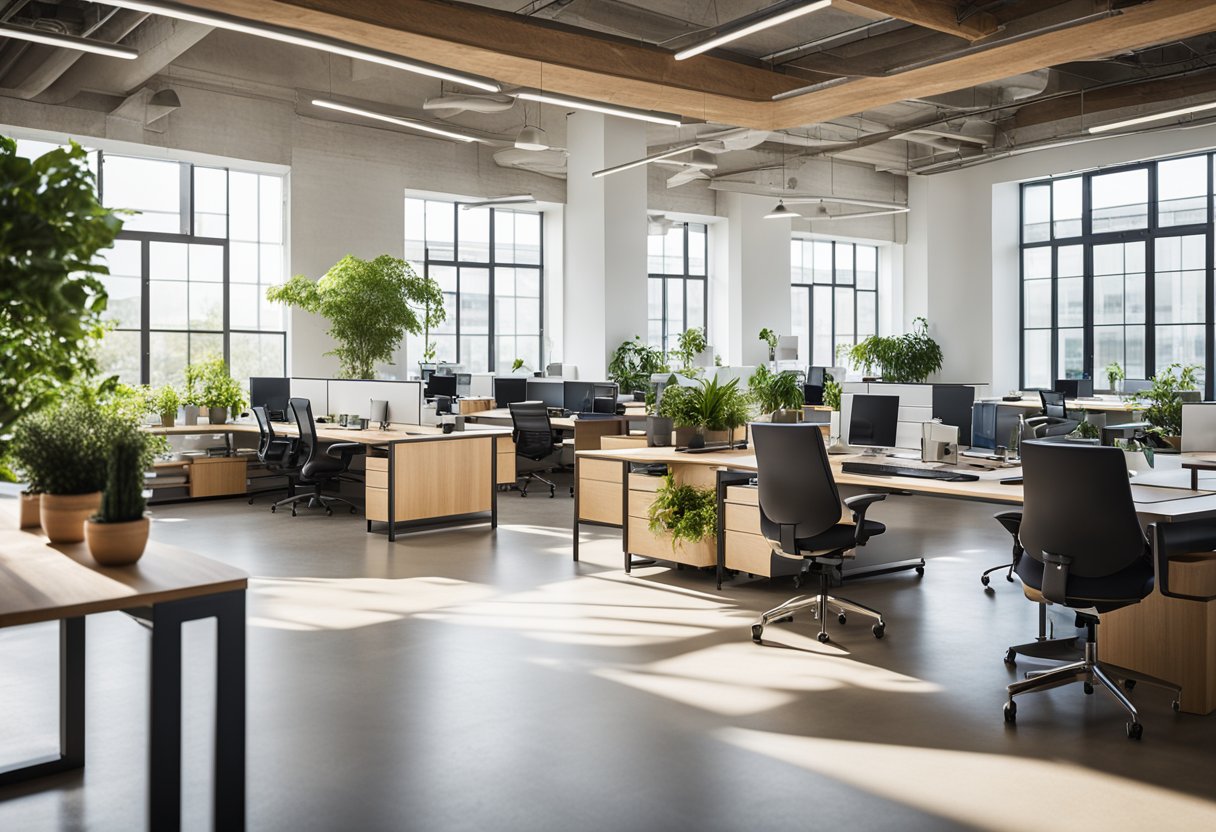
Creating an eco-friendly office design is not only good for the environment, but it is also beneficial for the health and well-being of your employees. Here are some employee-centric sustainable strategies that you can implement in your office:
Enhancing Employee Well-Being
One of the most important aspects of an eco-friendly office design is enhancing the well-being of your employees. This can be achieved by improving the indoor air quality, providing adequate ventilation, and installing HVAC systems that are energy-efficient. Good indoor air quality has been linked to increased productivity, reduced absenteeism, and improved overall health.
Productivity and the Green Office
Green offices are not only good for the environment, but they can also improve productivity. Studies have shown that employees who work in green offices are more productive, have better focus, and are less likely to take sick leave. This is because green offices provide a healthier and more comfortable working environment.
Innovative Recycling and Waste Reduction
Implementing a recycling program and waste reduction strategies is key to creating an eco-friendly office design. Recycling not only helps to reduce waste but also conserves natural resources. You can also encourage your employees to reduce waste by using reusable items such as coffee cups, water bottles, and cutlery. Additionally, you can reduce paper waste by using digital documents and implementing a paperless office policy.
In conclusion, implementing employee-centric sustainable strategies is essential for creating an eco-friendly office design. By enhancing employee well-being, improving productivity, and implementing innovative recycling and waste reduction strategies, you can create a healthier and more sustainable workplace.
Frequently Asked Questions
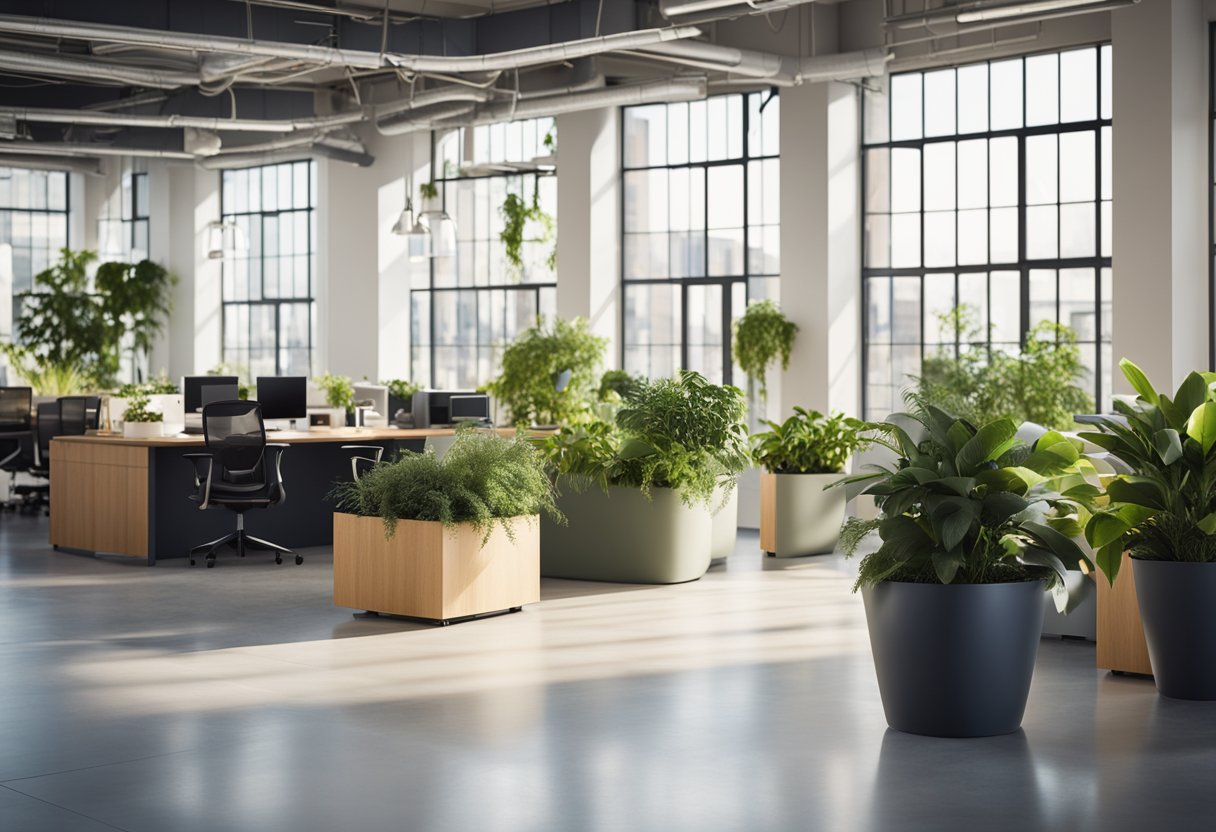
What are the top strategies for creating an environmentally friendly office space?
Creating an eco-friendly office space involves a range of strategies, including reducing energy consumption, minimising waste, and using sustainable materials. One of the most effective strategies is to install energy-efficient lighting, which can significantly reduce energy consumption and costs. You can also encourage employees to switch off electronic devices when not in use and use natural light wherever possible. Additionally, you can minimise waste by using recycled paper and reducing the use of single-use plastics.
How can we incorporate sustainable materials into our office design?
Incorporating sustainable materials into office design is an effective way to create an eco-friendly workplace. You can use recycled materials such as reclaimed wood or recycled plastic to create furniture and fixtures. You can also choose products that are made from renewable resources such as bamboo or cork. Additionally, you can choose non-toxic and low-emission materials such as low-VOC paints and adhesives.
What are the benefits of integrating green spaces within office environments?
Integrating green spaces within office environments can have a range of benefits. Plants can help to purify the air, reduce noise levels and improve employee wellbeing. They can also help to create a more relaxed and inviting atmosphere, which can boost productivity and creativity. You can incorporate green spaces by adding indoor plants, creating a rooftop garden or installing a living wall.
Can you suggest innovative ways to reduce energy consumption in office buildings?
Reducing energy consumption in office buildings requires innovative solutions. One approach is to use renewable energy sources such as solar panels or wind turbines to generate electricity. You can also install smart lighting systems that automatically adjust to the natural light levels. Additionally, you can use energy-efficient HVAC systems and insulation to reduce heating and cooling costs.
What features are essential for a sustainable office building design?
A sustainable office building design should include features such as energy-efficient lighting, renewable energy sources, and sustainable materials. It should also incorporate natural light and ventilation, as well as green spaces and water-saving fixtures. Additionally, it should be designed to reduce waste and encourage recycling.
How does office furniture contribute to an eco-friendly workplace?
Office furniture can contribute to an eco-friendly workplace by using sustainable materials such as recycled wood or metal, and by choosing products that are designed to last. You can also choose furniture that is made from renewable resources such as bamboo or cork. Additionally, you can choose non-toxic and low-emission materials such as low-VOC paints and adhesives.

